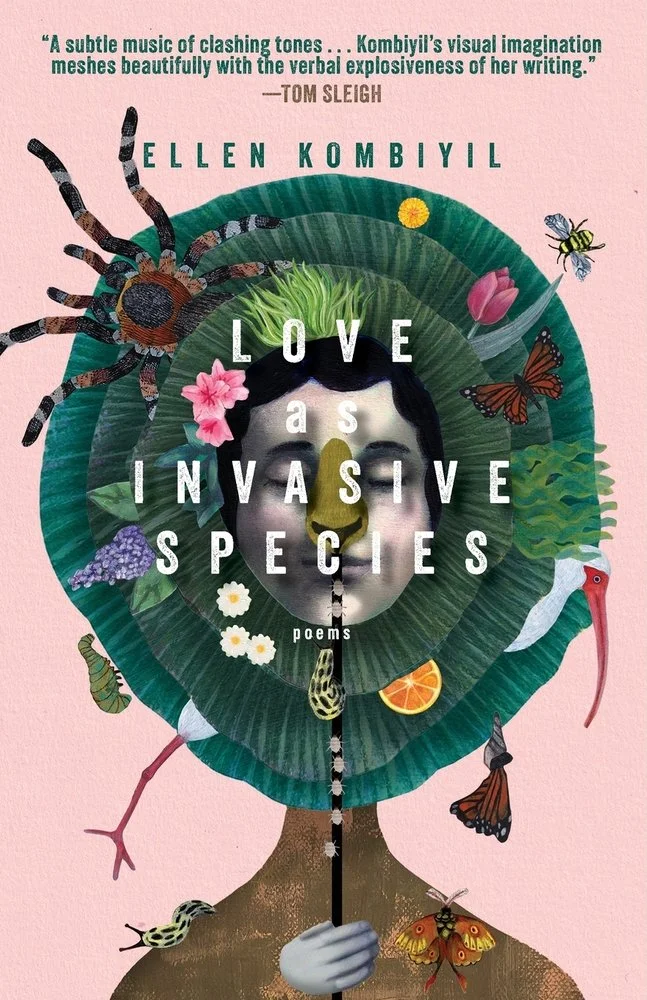Love as Invasive Species by Ellen Kombiyil
Reviewed by Vincent Norman
Ellen Kombiyil’s Love as Invasive Species explores the generational trauma of the women in her family through birth, life, and death. While looking through the lens of motherhood, the working class, and sexuality, Kombiyil both celebrates and grieves women in her family, often addressing them directly. “Oh Ma, / Gramma, / Great-grandma- / What sorrows / you survived.”/ She gathers their stories in order to acknowledge their suffering and free the future generations from carrying that pain.
Kombiyil believes to move forward in life you need to look backwards, which becomes literal: halfway through, the book flips, revealing a B-side, like a record, which mirrors the A-side. As she looks down her maternal line to “Begin again in the begot begun,” Love as Invasive Species splits into Side A and Side B, a poem on one side corresponding with a poem on the other side, reflecting moments in different stages of life or overlapping generations. Kombiyil puts these two sides in conversation with each other, weaving together varying perspectives over time. Using powerful but small moments from death and salted slugs to June bugs and birth, Kombiyil connects threads, creating a mosaic of special moments.
Love as Invasive Species restores the voices of women who came before us to expose the buried trauma held deep inside, the “dull ache that insists / the body open.” Love as Invasive Species is not only a testimonial, but a way to unearth and to recognize the pain of motherhood and women’s pain in order to move on to the next generation.
Vincent Norman
Vincent Norman is pursuing a M.A. in creative writing at Pittsburg State University. Their previous works can be found in Cow Creek Review. Their favorite hobbies include going to concerts, playing video games, and spending time with their two cats.



